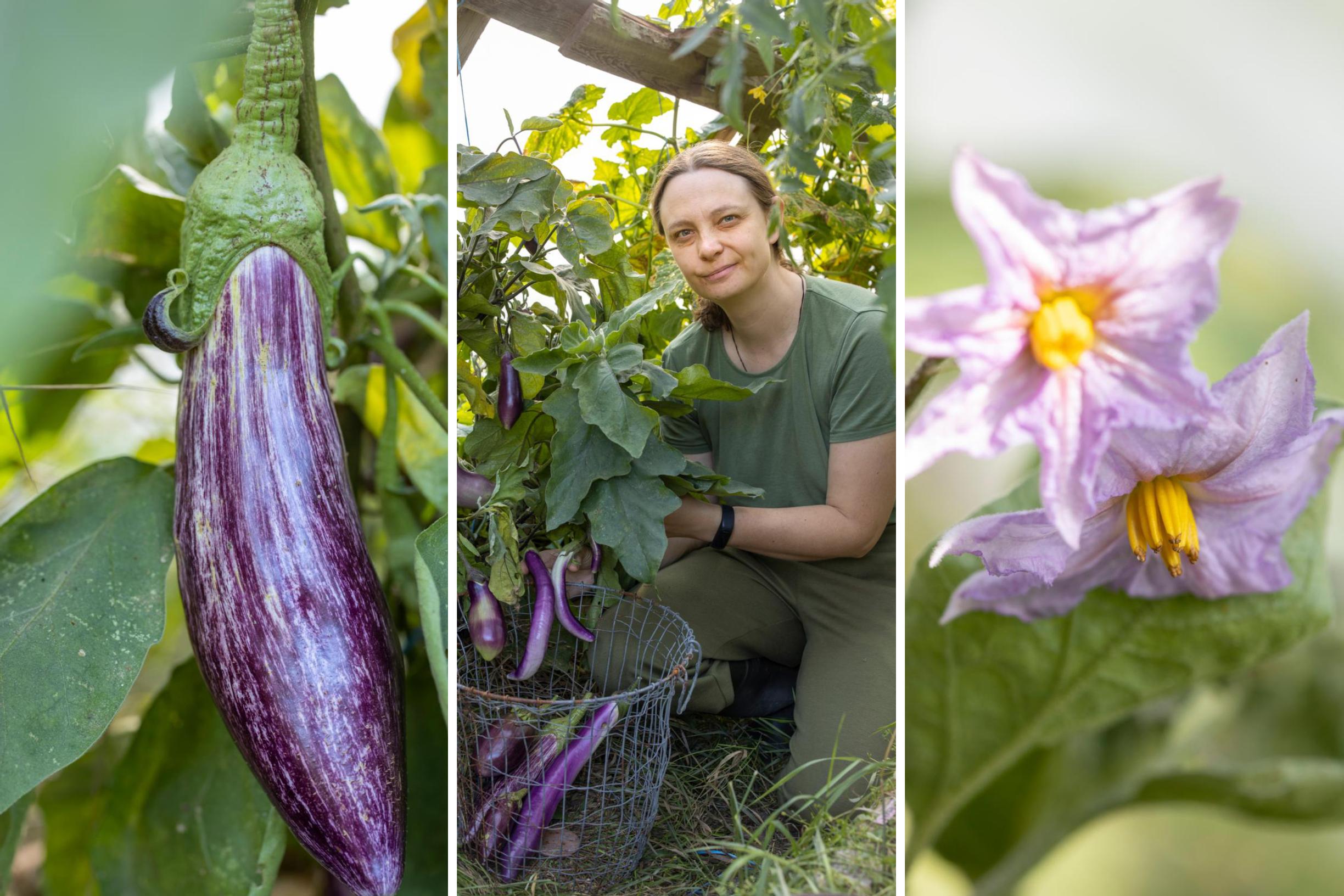
A bountiful eggplant harvest ripens in Jonna’s greenhouse: “In my experience, hydroponics multiplies yields”
When growing eggplants, the most essential factors are choosing the right variety and starting seedlings early. According to Jonna Kumpulainen, eggplants are easier to grow than their reputation suggests.
Why do you grow eggplants despite their reputation for being tricky?
My passion is to grow all kinds of edible plants, even unusual ones, from yam to prince sunflowers. I find eggplants fascinating. If you have a greenhouse, they’re not even difficult to grow. You do need to invest in seed starting, though. What’s more, there are varieties that have been developed specifically for northern conditions in Russia, the Baltics, and Canada. It’s exciting to see how they perform here in Kangasala, Finland.
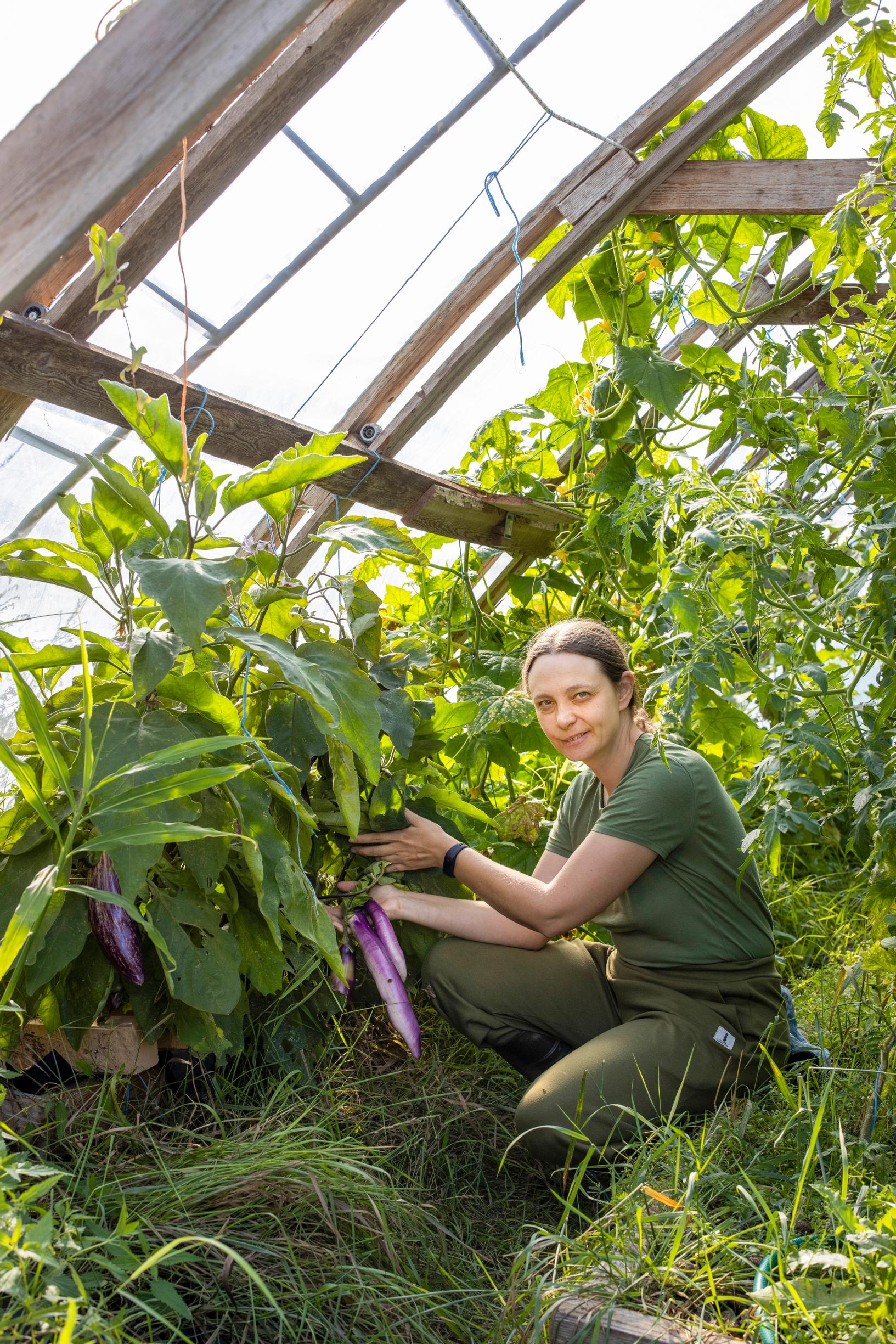
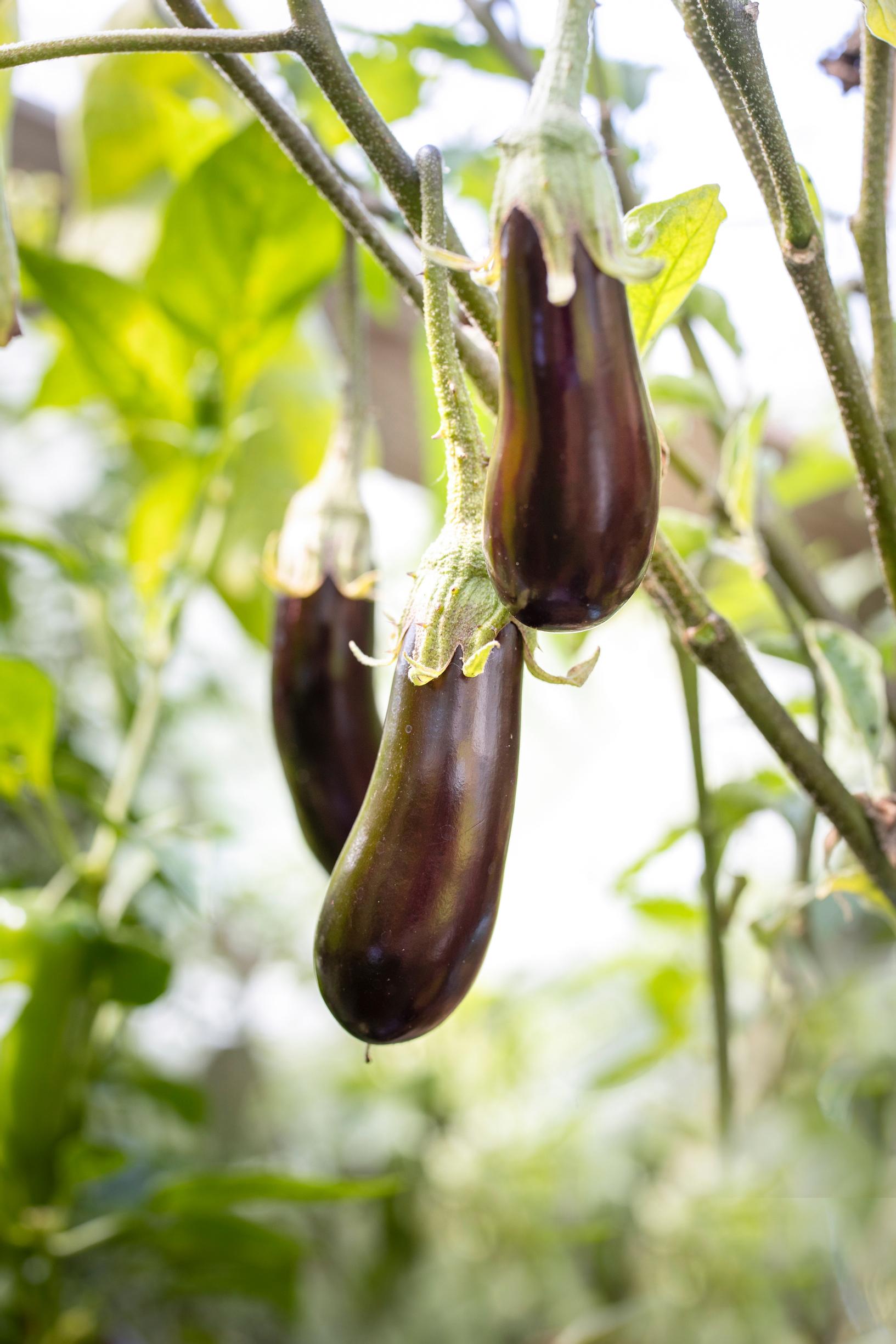
What are your tips for successful growing?
Eggplants have a long growing season, so you have to start them in February. Daylight is scarce then, so I set up fluorescent lights over my young seedlings. I wouldn’t even try to start them without extra lights. Eggplants stay fairly compact, and the seedlings don’t require that much space. I move the plants into the greenhouse at the beginning of June. At that point, the first flowers are opening. Eggplants need plenty of light, and an ideal temperature is around 20 degrees Celsius. I never prune the plants or remove any flowers, even though some guides suggest it.
“You have to hunt down good varieties at specialized European seed shops.”
I grow eggplants in the greenhouse using hydroponics. The seedlings grow in rockwool cubes in troughs where nutrient-rich water flows. I’m lazy about watering, but this way the plants always get the water and nutrients they need. Pumps circulate the nutrient solution, for which I use two different fertilizers (Ferticare Hydro and calcium nitrate). I’ve tried growing both in soil and in water in the greenhouse, and in my experience, hydroponics multiplies yields.
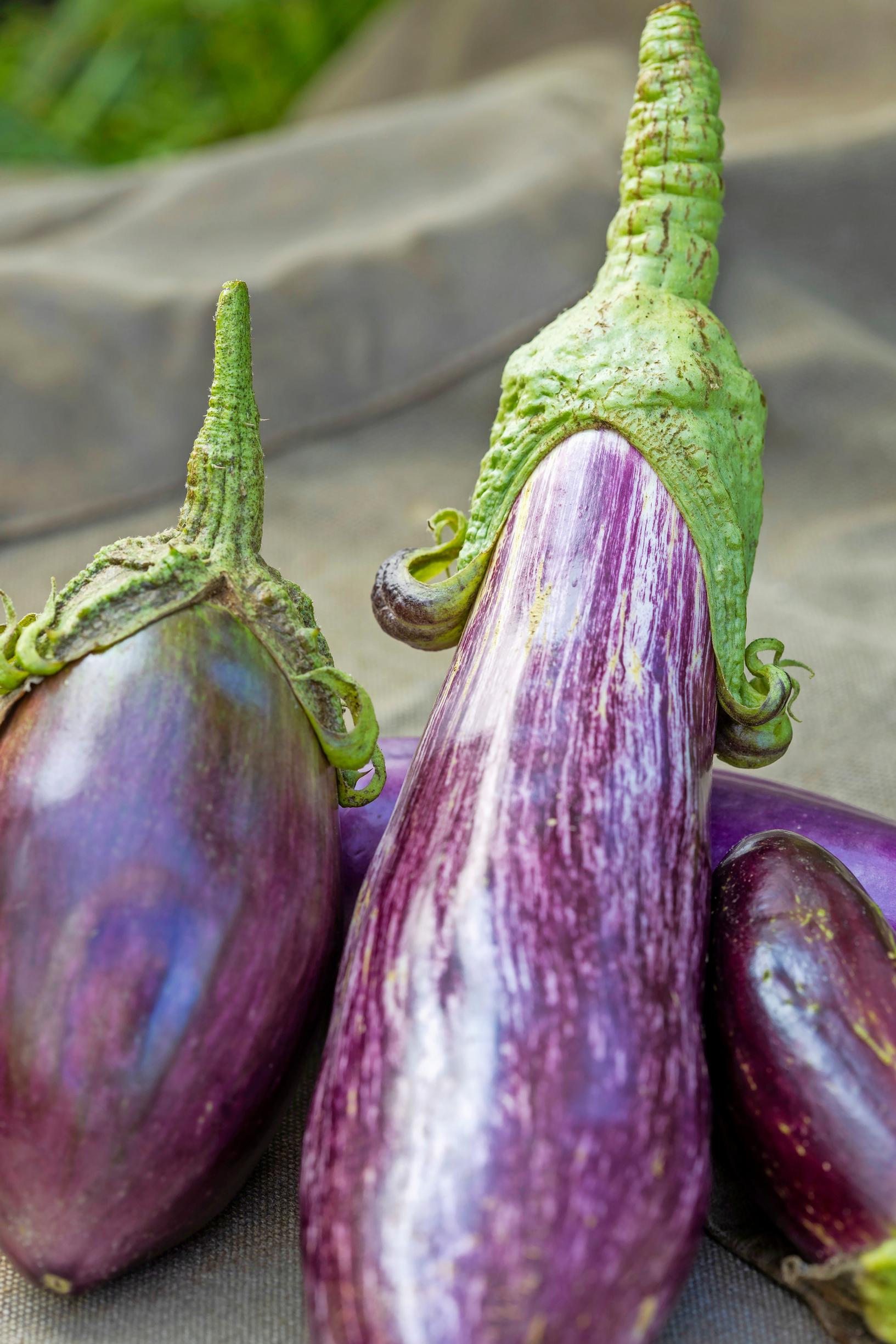
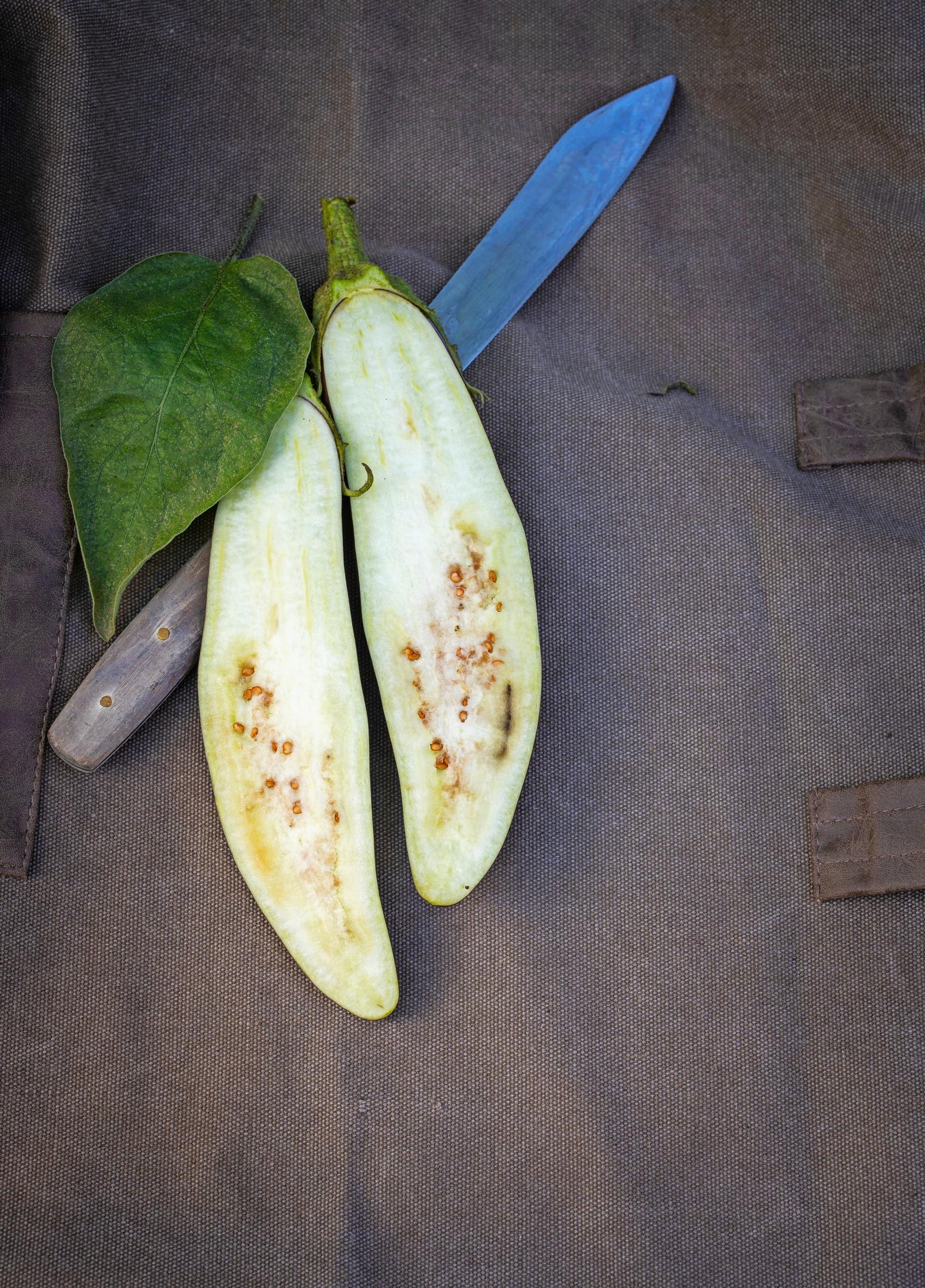
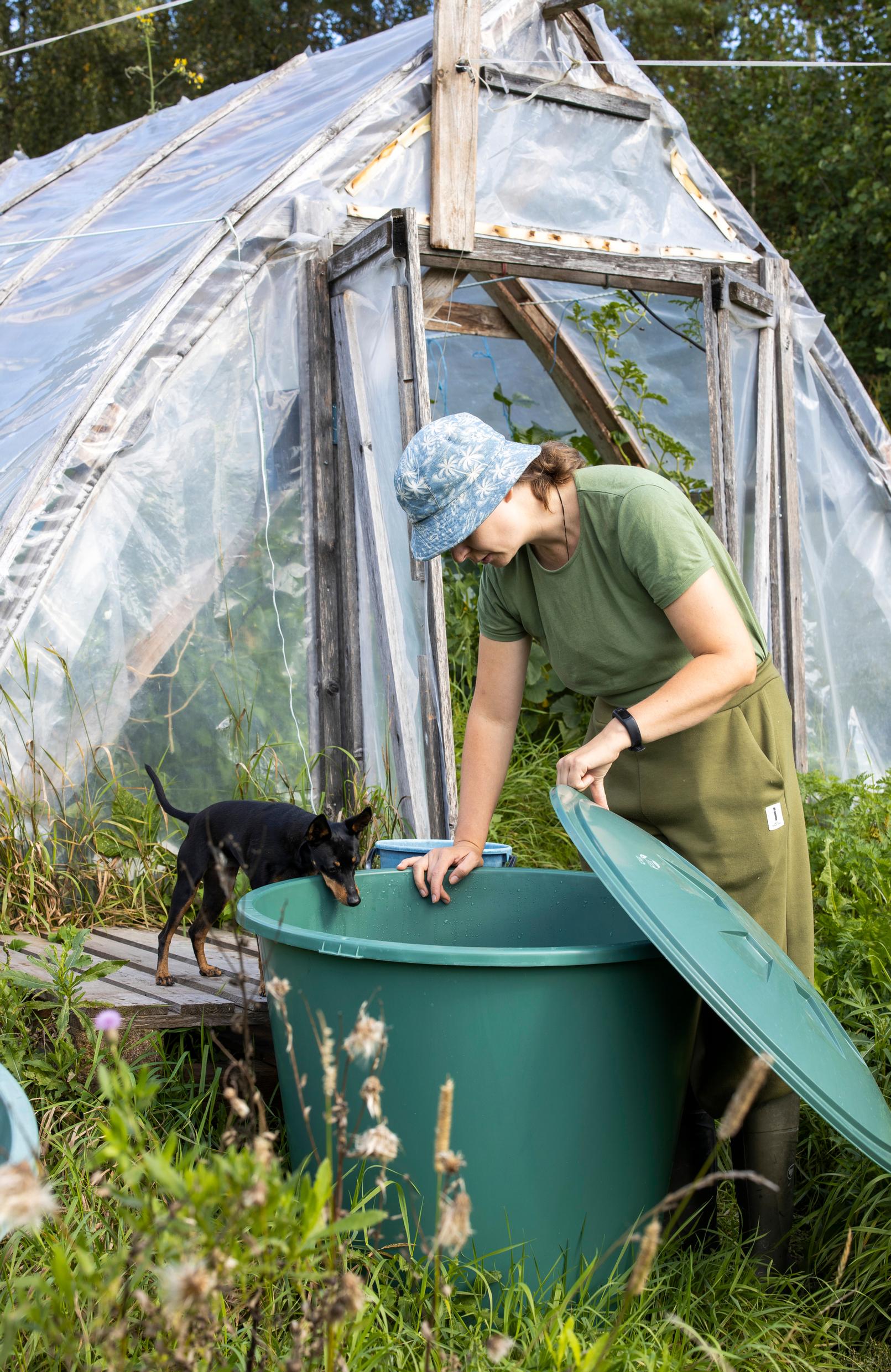
Is it true that eggplants attract pests?
Eggplants are probably the most sensitive to spider mites of all vegetables. They haven’t really caused major problems here, though. High humidity is the best remedy against spider mites. You can spray your plants regularly and use predatory mites as a biological control. Otherwise, eggplants are susceptible to the same diseases and pests as their relative, the tomato.
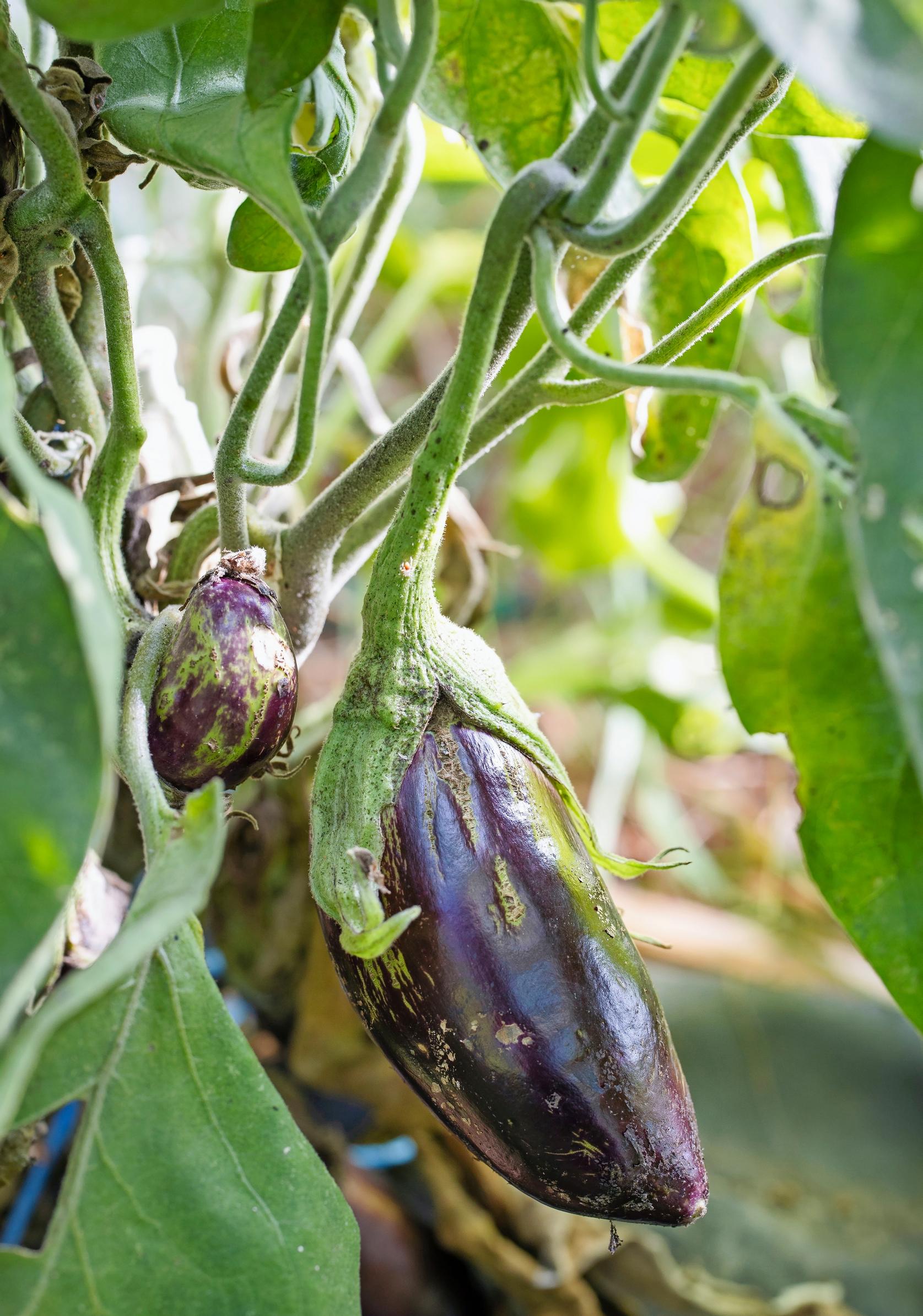
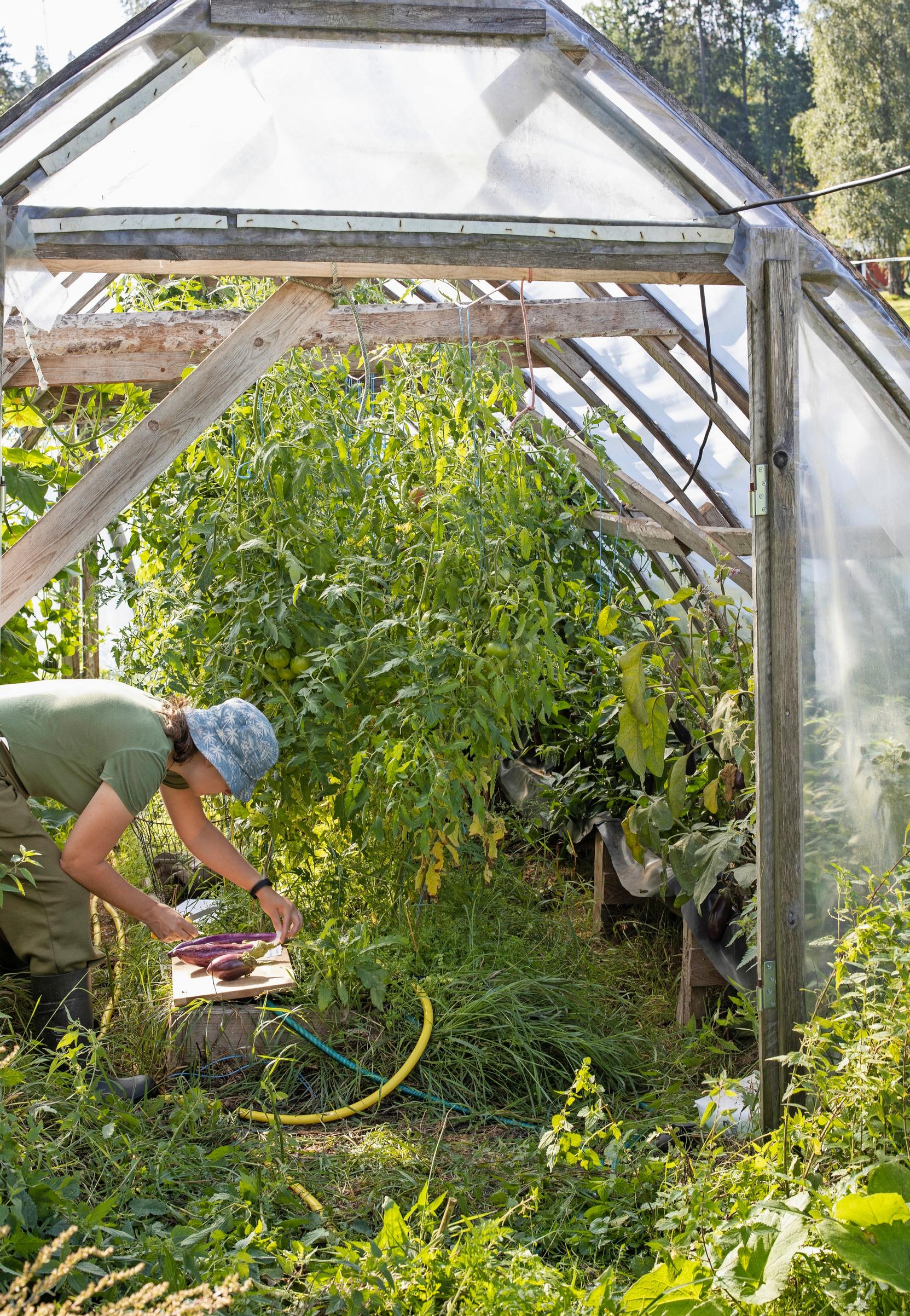
How important is choosing the right variety?
Very! In a northern climate, choosing an early variety is crucial. You only discover them by trying different ones—such varieties include ‘Baluroi,’ ‘De Barbentane,’ or ‘Kazachstan.’ Some varieties also do reasonably well outdoors in pots. I managed to get a small yield from my container plants even last summer, which was cold and extremely wet here. For example, the dwarf variety ‘Japonskiy Karlik’ is ideal for containers: it grows only about 30 centimeters tall yet produces 20-centimeter fruits. There’s considerable variation in earliness, appearance, yield, and the softness of the flesh, but I haven’t noticed big flavor differences among varieties. You really do have to hunt for great varieties at specialized European seed shops. Luckily, eggplant seeds keep their viability for a long time, so there’s no need to buy new ones every year.
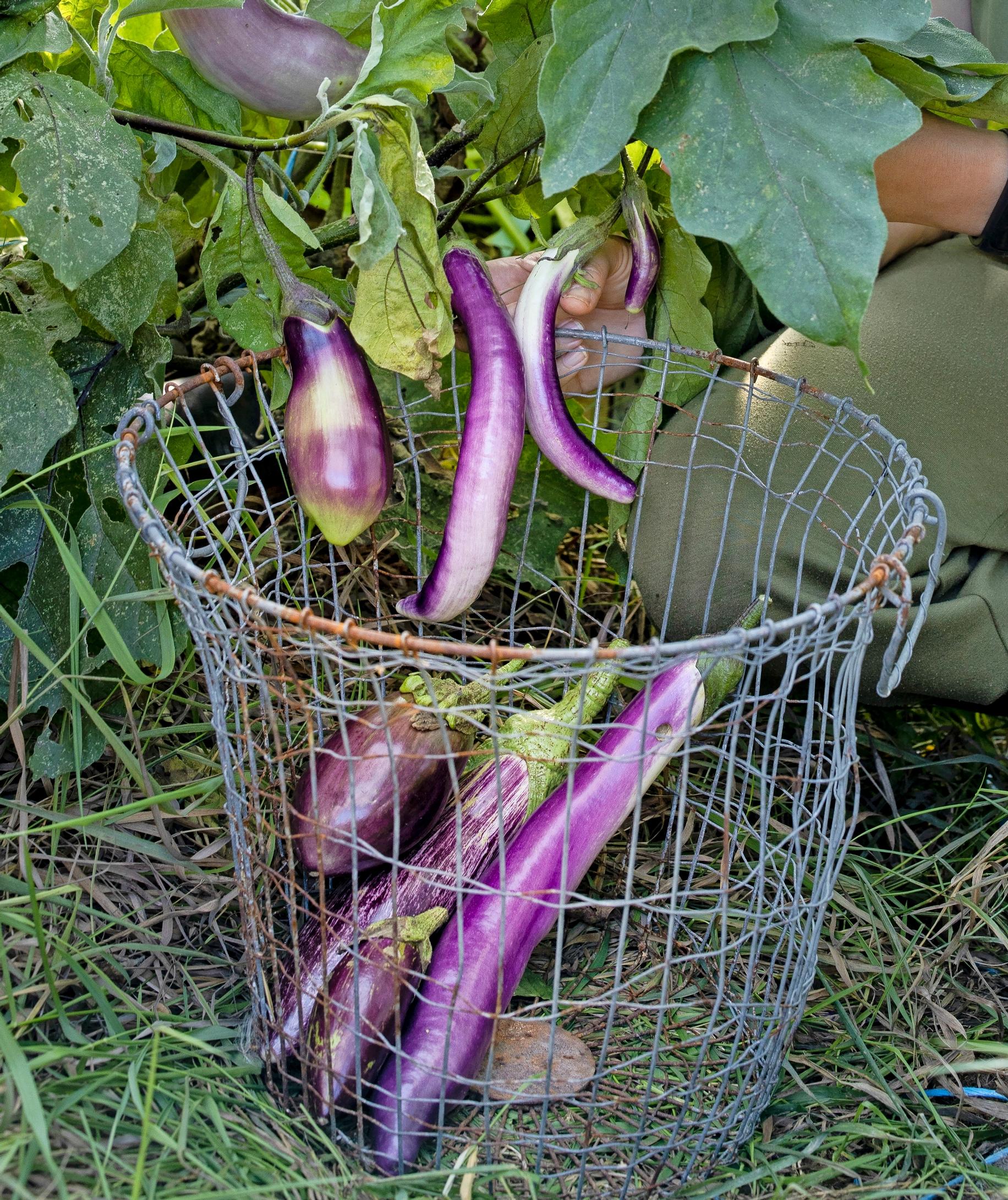
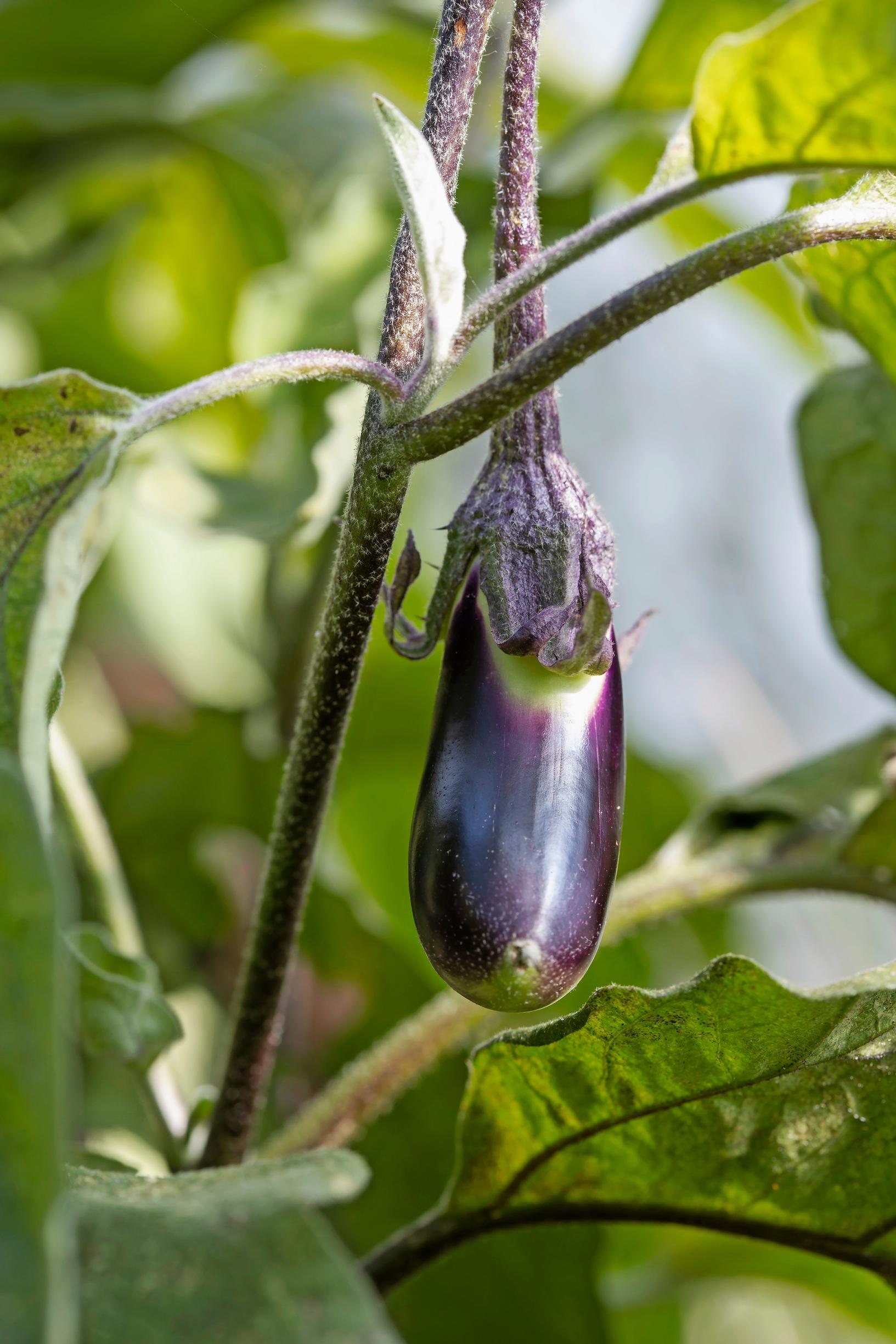
How do you know when the fruit is ripe?
Eggplants are eaten before they’re fully ripe, which means you can pick them as soon as they’ve reached the typical size for their variety. If they become overripe, their shiny skin turns dull and tough, the pale flesh darkens, and the seeds harden. The fruits don’t keep well after harvesting, so it’s best to use them right away.
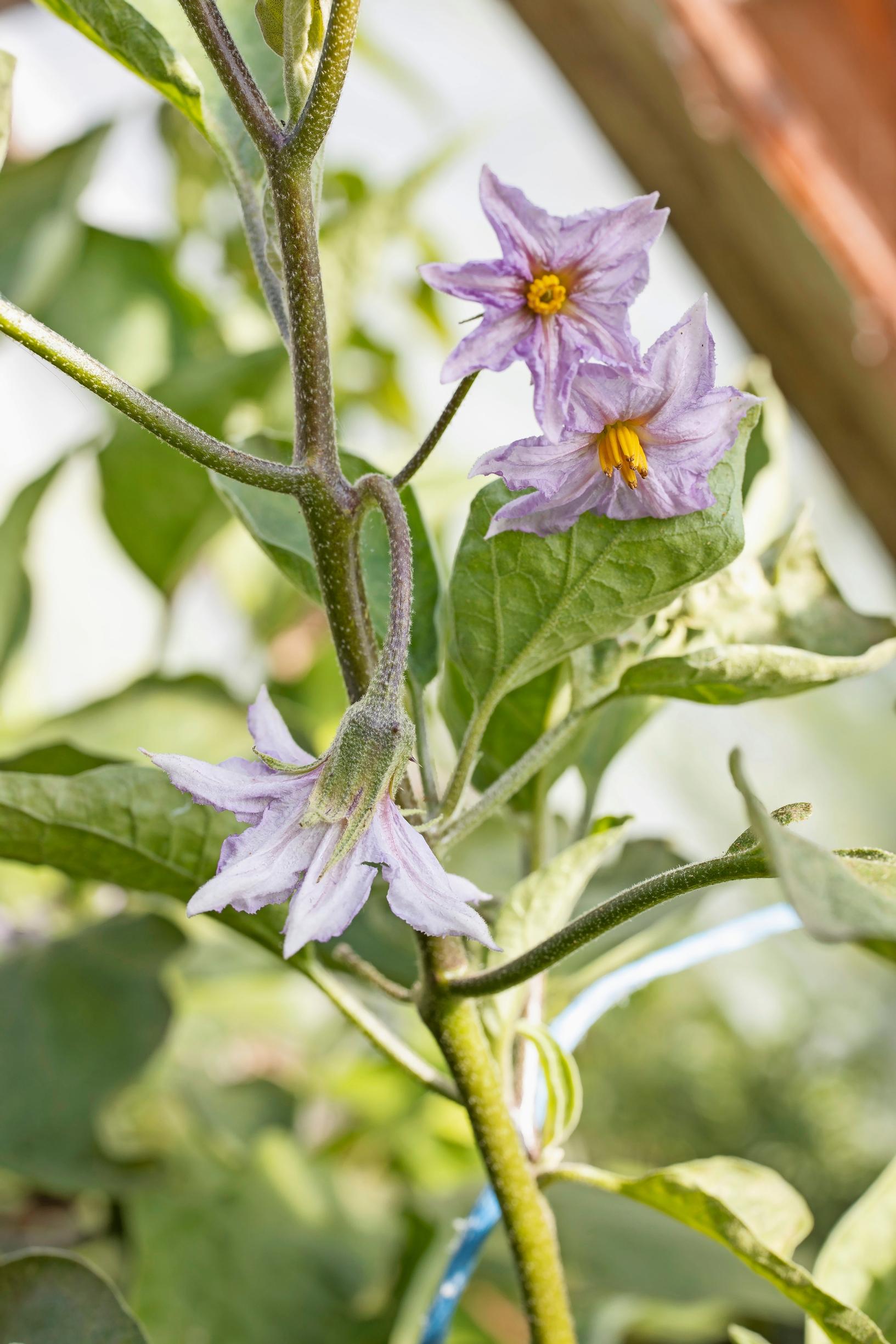
Five eggplant varieties
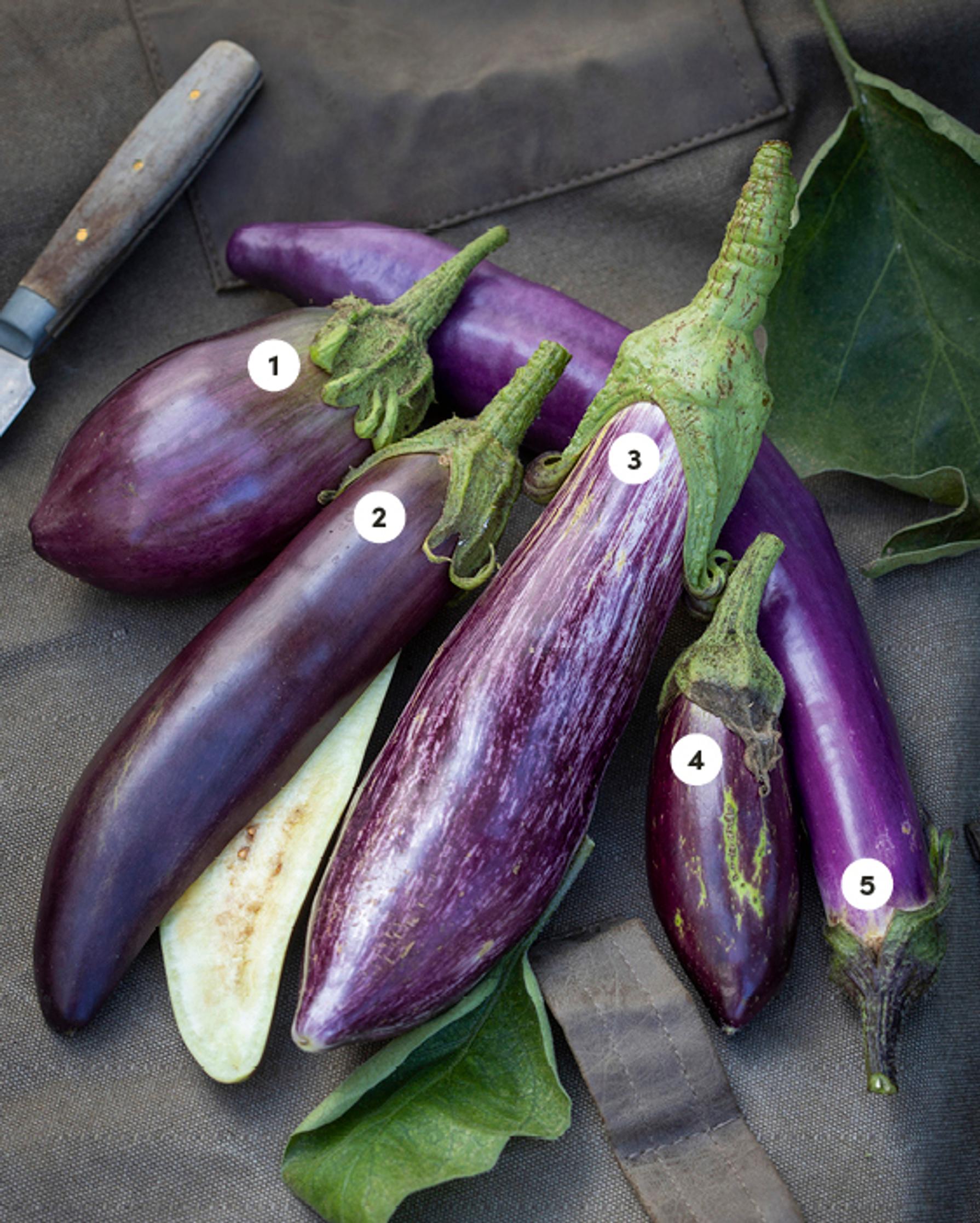
1. ‘Kazachstan’
The tear-shaped fruits with green stripes stay around 15 centimeters. Originating from Kazakhstan, this is the highest-yielding eggplant in Jonna’s crop, producing the most fruits in terms of quantity. Height 70 cm.
2. ‘Baluroi’ F1
An early, disease-resistant French variety that yields crops very consistent in quality. Height about 40 cm.
3. ‘Tsakoniki’
Eye-catching and tasty Greek variety from the town of Leonidio, where a festival is held every year in its honor. Height 65 cm.
4. ‘Violette de Toulouse’
From the Toulouse region of France, said to be early and productive. Based on Jonna’s experience, it doesn’t thrive as far up north as Kangasala, Finland—it produced few fruits, and they were small and scabby. Height about 70 cm.
5. ‘Pink Flamingo’
A fairly tall Siberian variety that produces slender, elongated fruits in shades from pink to pale violet. Its flavor is said to be exceptionally good, though Jonna hasn’t noticed much flavor difference among eggplant varieties. Height around 70 cm.


